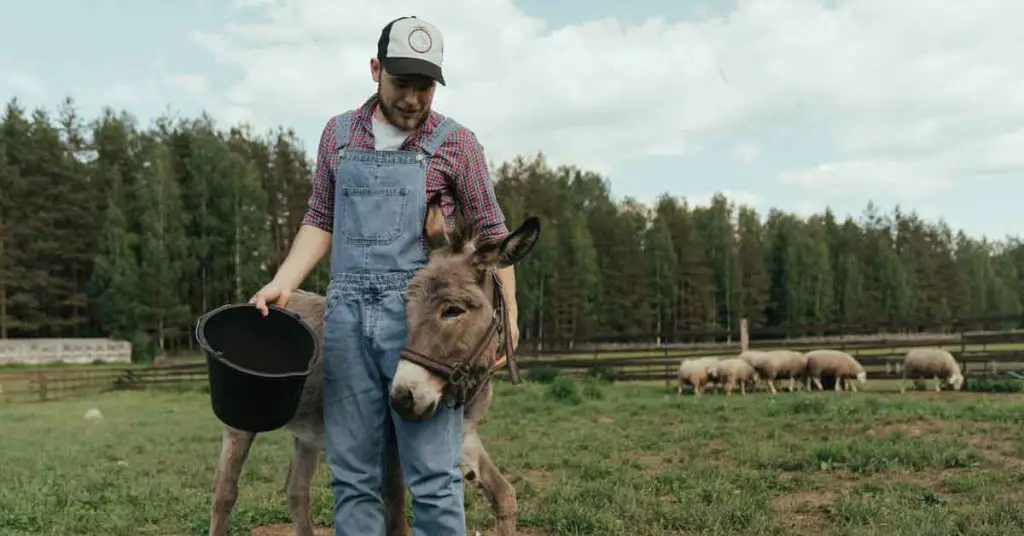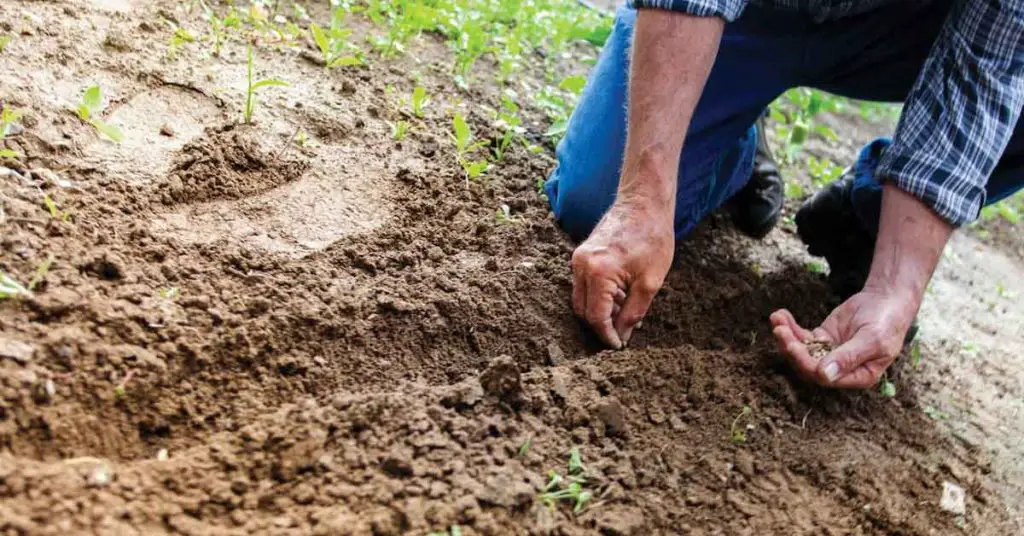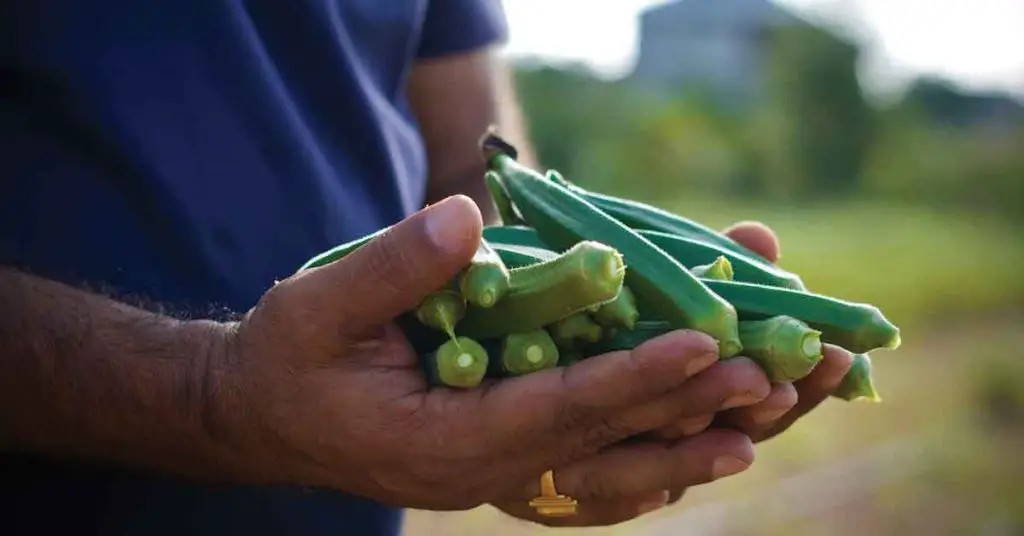Why Early Summer is a Critical Time for Homesteaders
Early summer is a transformative time on the homestead. The days are longer, the temperatures are rising, and the land is bursting with growth and opportunity. It’s the season when gardens hit full production, livestock require extra care, and homesteaders must strike a balance between planting, harvesting, and maintaining their property.
But with rising heat, unpredictable storms, and increased workloads, early summer also brings its own set of challenges. Water conservation becomes crucial, livestock need protection from heat stress, and homesteaders must find ways to maximize efficiency while preparing for the even hotter months ahead.
So, how do you make the most of this pivotal season? In this guide, we’ll cover:
- The biggest challenges of homesteading in early summer—and how to overcome them
- Best crops and livestock practices for a thriving summer homestead
- Water conservation techniques, pest management strategies, and soil health maintenance
- How to save money while increasing self-sufficiency on your homestead
Whether you’re a seasoned homesteader looking to fine-tune your summer routines or just getting started on your self-sufficiency journey, this guide will provide practical, time-tested strategies to ensure your homestead thrives throughout the season.
Resource: USDA Plant Hardiness Zone Map
Let’s dive in!
Early Summer Gardening and Crop Management
As homesteading in early summer reaches its peak, the garden transforms into a hub of activity, growth, and harvest. Early summer presents opportunities and challenges—while many warm-season crops flourish, rising temperatures, inconsistent rainfall, and pest pressures require strategic gardening techniques to maintain productivity.
By selecting heat-tolerant plants, improving soil health, and using organic pest control, homesteaders can ensure a thriving and abundant garden throughout the season.
What to Plant in Early Summer for a Thriving Harvest
Early summer is the perfect time to plant heat-loving crops that will mature before fall while successively planting quick-growing vegetables for a continuous harvest.
Best Vegetables and Fruits to Grow in Early Summer
Warm-Season Vegetables:
- Tomatoes – Thrive in warm soil, but need consistent watering and staking.
- Peppers (Bell, Jalapeño, Banana) – Heat-tolerant and highly productive.
- Eggplants – Love hot weather and need well-draining soil.
- Okra – Drought-resistant and thrives in intense summer heat.
- Sweet Potatoes – Perfect for late planting, thriving in long, warm days.
- Cucumbers – Grow rapidly in early summer and need vertical support.
- Bush Beans – Fast-growing and excellent for succession planting.
Fruits to Plant in Early Summer:
- Melons (Cantaloupe, Watermelon) – Require full sun and well-drained soil.
- Strawberries (Everbearing Varieties) – Can still be planted for late-season production.
- Blueberries and Blackberries – Ideal for adding perennial fruits to your homestead.
Tip: Succession plant every 2-3 weeks with crops like bush beans, lettuce, and radishes to maintain a steady harvest throughout summer.
Companion Planting to Boost Growth and Deter Pests
Companion planting enhances soil fertility, deters pests, and improves plant health by growing beneficial crops together.
Best Companion Planting Combinations for Early Summer:
- Tomatoes + Basil – Enhances tomato flavor and deters pests.
- Peppers + Marigolds – Keeps aphids and nematodes away.
- Corn + Beans + Squash (Three Sisters Method) – Beans fix nitrogen in the soil, squash shades the ground, and corn provides structure for beans to climb.
- Cucumbers + Dill – Attracts beneficial insects while repelling cucumber beetles.
Tip: Avoid planting tomatoes near potatoes to prevent the spread of blight.
Resource: The Old Farmer’s Almanac – Summer Gardening Guide
Managing Soil Health and Moisture in Summer Heat
As temperatures rise, soil moisture retention and fertility become top priorities. Without proper care, soil can dry out, become compacted, or lose nutrients, negatively affecting plant health.
No-Till Gardening and Mulching Techniques
No-Till Gardening for Soil Protection:
- Reduces soil disturbance, preserving microbial life and moisture retention.
- Prevents erosion and nutrient loss, keeping the soil cool and productive.
- Improves water absorption, making it ideal for drought-prone areas.
Best Mulching Techniques for Summer Gardens:
- Straw or Wood Chips – Retains soil moisture and suppresses weeds.
- Grass Clippings or Leaves – Adds organic matter and nutrients to the soil.
- Compost as a Mulch Layer – Improves soil fertility while reducing the need for synthetic fertilizers.
Tip: Apply mulch 2-4 inches deep around plants to prevent moisture loss and regulate soil temperature.
Cover Cropping to Improve Soil Fertility
Why Use Cover Crops in Summer?
- Prevents soil erosion and compaction.
- Enhances nitrogen fixation, reducing the need for added fertilizers.
- Suppresses weeds naturally without chemical intervention.
Best Cover Crops for Early Summer:
- Buckwheat – Grows quickly and attracts pollinators.
- Crimson Clover – Fixes nitrogen and improves soil health.
- Sorghum-Sudangrass – Ideal for high-heat areas needing biomass production.
Tip: Mow down cover crops before they set seed and leave them as a mulch layer to improve organic matter.
How to Deal with Common Early Summer Pests
Warm weather invites pests, which can devastate crops if not managed proactively. Organic pest control and natural deterrents are essential for maintaining a healthy homestead garden.
Organic Pest Control Methods for Summer Homesteads
DIY Organic Pest Sprays:
- Neem Oil Spray – Works against aphids, whiteflies, and spider mites.
- Garlic & Chili Pepper Spray – Deters caterpillars, beetles, and slugs.
- Diatomaceous Earth (DE) – Kills soft-bodied insects like ants, earwigs, and flea beetles.
Physical Pest Control Techniques:
- Hand-picking large pests like tomato hornworms and Japanese beetles.
- Using floating row covers to protect seedlings from flea beetles.
- Implementing crop rotation to prevent pest populations from building up.
Tip: Encourage birds, toads, and lizards on your homestead—they naturally help keep pest populations in check.
Beneficial Insects and Natural Repellents
Encouraging beneficial insects reduces the need for chemical pesticides while improving overall garden biodiversity.
Beneficial Insects for Pest Control:
- Ladybugs – Eat aphids and soft-bodied pests.
- Lacewings – Target mites, whiteflies, and caterpillars.
- Praying Mantises – Consume beetles, crickets, and other large insects.
How to Attract Beneficial Insects:
- Plant nectar-rich flowers like marigolds, sunflowers, and lavender.
- Provide small water sources to encourage insect reproduction.
- Avoid broad-spectrum pesticides that kill beneficial species.
Tip: Companion planting with pest-repelling herbs like mint, oregano, and thyme keeps unwanted insects away while supporting beneficial pollinators.
Resource: The Old Farmer’s Almanac – Pest Control Guide
Creating a Thriving Early Summer Garden
Early summer is a make-or-break season for homesteaders, requiring careful crop selection, soil management, and pest prevention. By choosing heat-tolerant plants, using water-efficient techniques, and incorporating organic pest control methods, you can ensure a bountiful and resilient summer harvest.
Livestock Care and Management in Early Summer
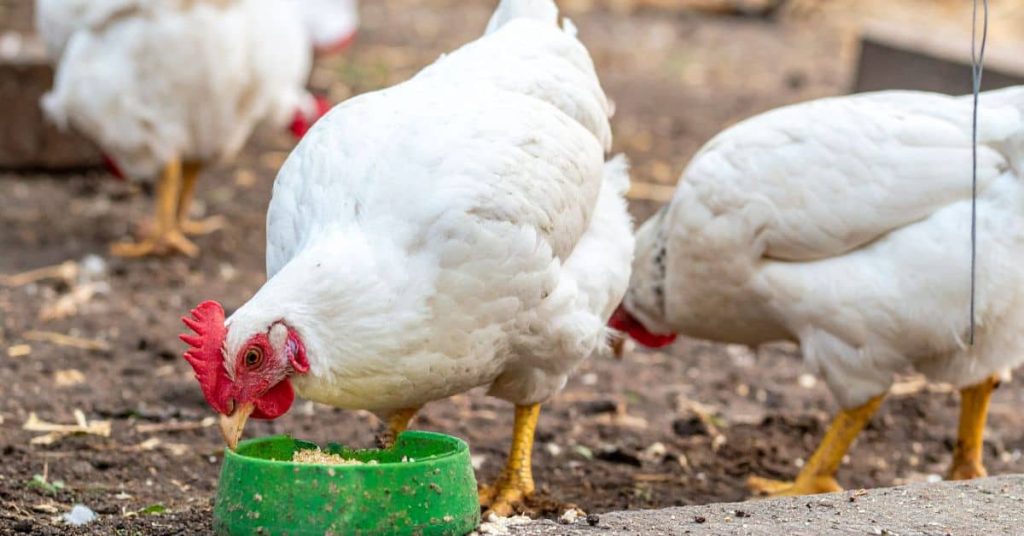
Homesteading in early summer presents unique challenges and opportunities when caring for livestock. Rising temperatures, increased pest activity, and seasonal dietary adjustments require homesteaders to adopt strategic livestock management practices to ensure animal health, productivity, and overall well-being.
This section covers the best livestock for early summer, methods for preventing heat stress, and effective pasture management techniques to keep your animals thriving throughout the season.
Best Livestock for Early Summer Homesteading
Choosing the right livestock for summer conditions is essential for maintaining productivity and minimizing heat-related stress. Some animals adapt better to warm weather, making them ideal choices for a self-sufficient homestead.
Chickens, Goats, and Rabbits for Meat, Milk, and Eggs
Chickens – The Ultimate Summer-Friendly Livestock
- Best for: Eggs, meat, and natural pest control.
- Heat-tolerant breeds:
- Leghorn – Excellent egg production and heat tolerance.
- Plymouth Rock – Hardy and adaptable to fluctuating temperatures.
- Rhode Island Red – Thrives in both hot and cool weather.
Tip: Provide shaded dust baths to help chickens naturally cool off and control parasites.
Goats – A Resilient, Heat-Tolerant Dairy and Meat Source
- Best for: Milk, meat, brush clearing, and manure composting.
- Hardy breeds for summer:
- Nubian Goats – Great milk production and heat adaptability.
- Kiko Goats – Naturally parasite-resistant and low maintenance.
- Boer Goats – Fast-growing and ideal for meat production.
Tip: Adjust grazing schedules to cooler morning and evening hours to prevent heat exhaustion.
Rabbits – A Low-Maintenance Meat Source
- Best for: Small-scale meat production and pelts.
- Best summer breeds:
- New Zealand Whites – Highly efficient for meat production.
- Californians – Adaptable to warm climates.
Tip: House rabbits in well-ventilated hutches and use frozen water bottles to keep them cool.
Beekeeping for Honey and Pollination Benefits
Bees play a crucial role in pollination and homestead sustainability, making beekeeping an excellent summer venture.
Benefits of Keeping Bees in Early Summer:
- Boosts garden and orchard productivity through pollination.
- Produces honey, beeswax, and other marketable products.
- Requires minimal space and low daily maintenance.
Best Bee Breeds for Summer Homesteading:
- Italian Bees – Gentle, productive, and adapt well to heat.
- Carniolan Bees – Excellent foragers and cold-resistant for year-round sustainability.
- Buckfast Bees – Disease-resistant and efficient honey producers.
Tip: Ensure hives have access to a nearby water source (such as a shallow dish with floating sticks for safety) to prevent dehydration.
Resource: Tennessee Department of Agriculture – Livestock Management
Preventing Heat Stress in Livestock
Rising temperatures in early summer can put animals at risk of heat exhaustion, dehydration, and reduced productivity. Implementing preventative measures ensures livestock remain healthy and productive.
Providing Shade, Ventilation, and Hydration
Create Natural and Artificial Shade
- Use trees, portable shelters, or shade cloths to protect livestock.
- Orient barns and shelters to maximize airflow and minimize heat retention.
Improve Ventilation in Animal Housing
- Install fans or misting systems in barns and coops.
- Use open-sided shelters to increase airflow.
Ensure Constant Access to Fresh Water
- Use large-capacity troughs and automatic waterers to prevent dehydration.
- Add electrolytes to livestock water during extreme heat waves.
- Place water sources in shaded areas to keep them cool.
Tip: Check water sources multiple times daily to ensure availability and cleanliness.
Adjusting Feeding Schedules to Prevent Heat Exhaustion
Modify Feeding Times
- Feed animals early in the morning and late in the evening to avoid heat stress.
- Provide extra hydration through water-rich feed (e.g., soaked grains, fresh greens).
Change Diet for Seasonal Nutritional Needs
- Increase fiber-rich feed (hay, forage) for better digestion and heat tolerance.
- Reduce high-energy grains, which can increase internal heat production.
Tip: Incorporate grazing rotations with high-moisture pasture crops to provide both hydration and nutrition.
Rotational Grazing and Pasture Management
Rotational grazing enhances forage production, soil health, and livestock well-being, especially in early summer when grass growth peaks.
Best Practices for Sustainable Grazing in Summer
Implement a Rotational Grazing System
- Divide pasture into sections and rotate livestock regularly.
- Prevents overgrazing and allows grass to regenerate.
Optimize Stocking Density
- Adjust the number of animals per acre to maintain healthy pasture conditions.
- Rule of thumb: One acre can typically support 1-2 cows, 4-6 goats, or 8-10 sheep.
Tip: Rotate pastures every 3-5 days to avoid overgrazing and soil depletion.
Choosing Summer-Friendly Forage Crops
Best Forages for Early Summer Grazing:
- Bermudagrass – Heat-tolerant and nutrient-rich.
- Sudangrass – Grows fast and provides excellent summer forage.
- Alfalfa – High in protein and ideal for cattle and goats.
Best Cover Crops for Livestock Feed in Summer:
- Clover (White & Crimson) – Fixes nitrogen and improves soil health.
- Chicory – Deep-rooted forage that stays green during drought.
Tip: Plant a mix of warm-season grasses and legumes for diverse grazing options and soil improvement.
Keeping Livestock Healthy and Productive in Early Summer
Homesteading in early summer requires proactive livestock management to prevent heat stress, ensure hydration, and maintain healthy pastures. By choosing resilient livestock breeds, implementing sustainable grazing systems, and providing essential care, homesteaders can keep animals thriving throughout the season.
Water Conservation and Smart Irrigation for Summer Homesteading
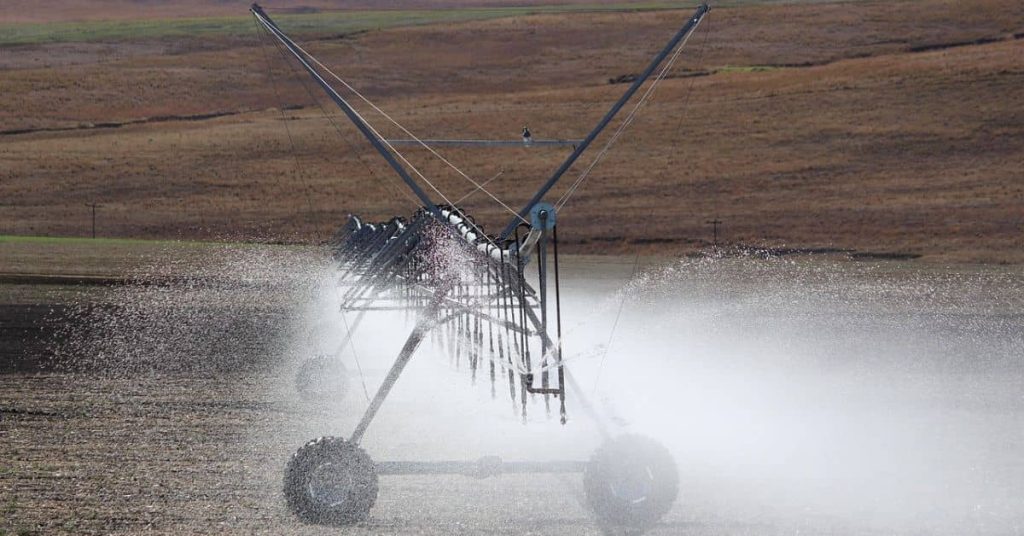
Homesteading in early summer means warmer temperatures, increased evaporation, and irregular rainfall patterns, making water conservation and irrigation efficiency critical for maintaining a productive homestead. Whether you’re growing crops, watering livestock, or managing a sustainable landscape, maximizing water use while minimizing waste is essential for long-term resilience and self-sufficiency.
This section covers rainwater harvesting, water storage strategies, and efficient irrigation methods to help homesteaders thrive during dry summer months.
Rainwater Harvesting and Efficient Water Use
Collecting and conserving water reduces reliance on municipal supplies and ensures a steady supply for crops, livestock, and daily homestead needs.
Setting Up a DIY Rainwater Collection System
A rainwater harvesting system can provide an affordable, sustainable water source for gardens, livestock, and household use.
Basic Rainwater Collection Setup:
- Gutters and Downspouts – Install on rooftops to channel rain into collection barrels.
- Rain Barrels or Large Cisterns – Store collected water for later use.
- First-Flush Diverter – Filters out debris and contaminants from the initial runoff.
- Overflow System – Directs excess water to ponds, swales, or garden beds.
Best Containers for Rainwater Storage:
- 55-gallon food-grade barrels – Ideal for small-scale collection.
- IBC totes (275–330 gallons) – Great for larger storage needs.
- Underground cisterns – Provide long-term storage for year-round use.
Tip: Position barrels near garden beds and animal pens for easy access and gravity-fed watering.
Storing and Filtering Rainwater for Livestock and Crops
Stored rainwater must be kept clean and free of bacteria, algae, and debris before use.
How to Keep Rainwater Clean:
- Use tight-fitting lids to prevent mosquito breeding and contamination.
- Place storage tanks in shaded areas to reduce algae growth.
- Add a small amount of hydrogen peroxide or food-grade lime to keep water fresh.
Best Filtering Methods for Rainwater Use:
- Basic Filtration (For Gardening & Livestock Use)
- Mesh filters or sediment screens remove leaves, dust, and dirt.
- Sand and charcoal filters improve water clarity.
- Advanced Filtration (For Household Use)
- UV purifiers kill harmful bacteria and pathogens.
- Reverse osmosis removes heavy metals and contaminants.
Tip: Use separate storage tanks for gardening, livestock, and household water to ensure proper treatment for each use.
Resource: NRCS – Water Conservation for Farmers
Best Irrigation Methods for Hot and Dry Conditions
Proper irrigation is essential for keeping crops hydrated while minimizing water waste. The right method depends on climate, soil type, and homestead size.
Drip Irrigation vs. Sprinkler Systems
Drip Irrigation – The Most Efficient Option
- Delivers water directly to plant roots, reducing evaporation.
- Uses 30-50% less water than overhead sprinklers.
- Best for vegetable gardens, orchards, and raised beds.
- Can be automated with timers and moisture sensors.
Sprinkler Systems – Good for Large Fields
- Best for lawns, pastureland, and row crops.
- Overhead watering can lead to higher evaporation and water waste.
- Use rotating or low-pressure sprinklers to improve efficiency.
Tip: Combine drip irrigation with mulch to retain moisture and reduce soil temperature.
Using Swales and Ponds for Water Conservation
Swales – Passive Water Collection for Gardens and Pastures
- Shallow ditches dug along the land’s contour that slow water runoff and improve soil absorption.
- Helps reduce erosion, capture rainwater, and support deep-rooted plants.
- Ideal for sloped homesteads or areas prone to seasonal flooding.
Ponds – Multi-Purpose Water Storage for Livestock and Irrigation
- Can be used for fish farming, irrigation, and emergency water supply.
- Serves as a heat buffer, cooling the surrounding microclimate.
- Stock with fish (catfish, tilapia) to create a self-sustaining ecosystem.
Tip: Use aquatic plants like cattails and duckweed to help filter and oxygenate pond water naturally.
Conserving Water for a Resilient Homestead
Homesteading in early summer requires thoughtful water management to prevent drought stress, maintain healthy crops, and ensure livestock well-being. By implementing rainwater harvesting, efficient irrigation, and sustainable water conservation techniques, homesteaders can thrive in even the driest summer conditions.
Emerging Homesteading Trends in Early Summer
As homesteading in early summer continues to evolve, new trends are shaping the way modern homesteaders approach self-sufficiency, sustainability, and efficiency. From urban homesteading innovations to eco-friendly energy solutions, emerging practices are making homesteading more accessible, environmentally responsible, and adaptable to changing climates.
This section explores the latest trends in homesteading, focusing on urban self-sufficiency, renewable energy, and water conservation techniques that can enhance productivity and sustainability during the summer months.
Urban Homesteading: Bringing Self-Sufficiency to City Spaces
Not all homesteaders live on large rural plots. Urban homesteading is on the rise, allowing city dwellers to grow their own food, raise small livestock, and embrace self-sufficiency even with limited space.
Container Gardening and Vertical Farming Techniques
Maximizing Small Spaces with Container Gardening
- Use raised beds, grow bags, and hanging baskets to cultivate fresh produce in balconies, patios, or rooftops.
- Ideal crops for early summer container gardening:
- Tomatoes (cherry and dwarf varieties)
- Peppers (bell and hot peppers thrive in pots)
- Herbs (basil, oregano, mint, and thyme grow well in small spaces)
- Strawberries (ideal for hanging baskets)
Vertical Farming for Increased Productivity
- Install trellises, wall-mounted planters, and hydroponic towers to grow crops upward instead of outward.
- Best vertical crops for early summer homesteading:
- Cucumbers – Train vines along trellises for space efficiency.
- Pole Beans – Grow well on simple string or mesh trellises.
- Squash & Melons – Use vertical netting to support fruit growth.
Tip: Use self-watering containers and drip irrigation to minimize water loss and keep plants hydrated during hot summer days.
Community Gardens and Shared Resources
For those lacking private land, community gardens and shared homesteading resources provide an excellent alternative to traditional homesteading.
Benefits of Community Gardens in Urban Homesteading
- Access to shared land for growing vegetables and herbs.
- Opportunities to learn from experienced growers and exchange resources.
- Encourages food security and self-sufficiency in urban areas.
Cooperative Farming and Food Exchanges
- Homesteaders in early summer can benefit from shared resources like:
- Bulk seed and plant swaps for cost-effective gardening.
- Shared livestock feed purchasing to reduce expenses.
- Skill-sharing workshops on food preservation and urban farming.
Tip: Check with local extension offices, farmers’ markets, and sustainability organizations for community garden opportunities in your area.
Resource: Energy.gov – Renewable Energy Solutions
Sustainable Living: Integrating Eco-Friendly Practices
Sustainability is becoming a key component of modern homesteading, with more homesteaders adopting renewable energy and conservation practices to reduce their environmental impact and increase self-reliance.
Renewable Energy Solutions for Homesteads
Solar Power for Energy Independence
- Solar panel installations are more affordable and efficient than ever.
- Portable solar generators provide backup power for off-grid areas.
- Best uses for solar energy in summer homesteading:
- Running irrigation pumps and water filtration systems.
- Powering barn fans and ventilation systems for livestock cooling.
- Charging electric tools and battery-operated farm equipment.
Wind and Micro-Hydro Energy
- Small wind turbines can generate power in open areas with steady wind flow.
- Micro-hydro systems work well on homesteads with running streams for consistent energy production.
- Hybrid systems (solar + wind or solar + hydro) create a more stable power supply year-round.
Tip: For off-grid homesteaders, investing in a deep-cycle battery bank ensures continuous power storage for nighttime and cloudy days.
Water Conservation Methods for Homesteaders
Water is a precious resource in early summer, and homesteaders are adopting innovative water-saving techniques to combat droughts and reduce dependency on municipal supplies.
Rainwater Harvesting for Sustainable Irrigation
- Install gutter-fed rain barrels to capture runoff for watering gardens and livestock.
- Use drip irrigation systems to distribute water directly to plant roots, reducing waste.
- Consider building a pond or swale system to naturally collect and store rainwater.
Greywater Recycling for Non-Potable Use
- Divert lightly used household water (from sinks and laundry) for watering fruit trees and non-edible plants.
- Install reed bed filtration systems to clean greywater before using it for irrigation.
Tip: Mulching around plants with straw, wood chips, or grass clippings reduces evaporation and improves moisture retention in the soil.
Adopting New Trends for a Resilient Homestead
Homesteading in early summer is evolving with new innovations in urban farming, renewable energy, and water conservation. By integrating vertical gardening, sustainable energy sources, and efficient irrigation systems, homesteaders can increase productivity while reducing their environmental impact.
Preserving Early Summer Harvests: Canning and Drying Techniques
Homesteading in early summer means an abundance of fresh fruits, vegetables, and herbs, but ensuring that your harvest lasts beyond the season requires proper preservation techniques. Canning, drying, and root cellaring are time-tested methods that allow homesteaders to store food for year-round use while minimizing waste and maximizing self-sufficiency.
This section explores the best ways to preserve early summer crops, including canning, drying, fermenting, and low-energy storage solutions to keep your harvest fresh long after summer ends.
How to Store Fruits and Vegetables for Year-Round Use
Best Canning Methods for Summer Produce
Canning is one of the most effective long-term storage methods for preserving the flavors and nutrients of summer produce. The method you choose depends on the acidity of the food you’re preserving.
Water Bath Canning (For High-Acid Foods)
- Best for fruits, jams, pickles, tomatoes, and salsas.
- Uses boiling water (212°F) to create a vacuum seal in glass jars.
- Requires mason jars, lids, rings, a large canning pot, and a rack.
Pressure Canning (For Low-Acid Foods)
- Required for vegetables, meats, beans, and soups.
- Uses a pressure canner to reach 240°F to kill bacteria safely.
- Essential for safe long-term storage of non-acidic foods.
Tips for Successful Canning:
- Always use sterilized jars and new lids to prevent contamination.
- Adjust processing time based on altitude for proper sealing.
- Store finished jars in a cool, dark place away from direct sunlight.
Best Early Summer Crops for Canning:
- Tomatoes – Use for sauces, salsa, and diced tomatoes.
- Berries – Make jam, preserves, or pie fillings.
- Green Beans & Carrots – Great for pressure canning as stand-alone veggies.
- Pickles & Peppers – Ferment or use a vinegar brine for pickling.
Resource: National Center for Home Food Preservation
Drying and Fermenting for Long-Term Storage
Dehydration and fermentation are low-energy methods for preserving food without refrigeration.
Drying Fruits and Vegetables
- Works best for apples, peaches, tomatoes, zucchini, peppers, and herbs.
- Can be done using:
- Air drying (herbs & peppers) – Hang in a warm, dry place with good airflow.
- Solar drying – Use a solar dehydrator for low-cost preservation.
- Electric dehydrators – Provide consistent drying with controlled temperatures.
Tip: Store dried produce in airtight containers with oxygen absorbers for longevity.
Fermenting for Healthy, Probiotic-Rich Foods
- Great for pickles, sauerkraut, kimchi, and fermented salsas.
- Uses salt or whey to naturally preserve and enhance flavor.
- Requires mason jars, salt, filtered water, and a fermentation weight.
Tip: Store in a cool place (like a root cellar or fridge) once fermentation is complete.
Best Crops for Drying and Fermenting:
- Fruits: Apples, bananas, peaches, tomatoes.
- Vegetables: Peppers, onions, mushrooms, cucumbers (for pickling).
- Herbs: Basil, oregano, rosemary, mint.
Tip: Label all jars with the date and type of preserved food for easy organization.
Root Cellaring and Other Low-Energy Storage Solutions
If you prefer non-electric food storage, root cellars and other low-tech methods provide a reliable alternative for keeping food fresh for months.
Building a Root Cellar for Summer Crops
A root cellar uses underground insulation to maintain cool, stable temperatures year-round, keeping produce fresh without refrigeration.
Ideal Root Cellar Conditions:
- Temperature: 32-50°F
- Humidity: 85-95% for root vegetables, 65-75% for fruits
- Dark and well-ventilated to prevent spoilage and mold
Best Summer Crops for Root Cellaring:
- Root Vegetables: Carrots, beets, potatoes, onions.
- Cabbages: Store well in high-humidity environments.
- Winter Squash & Pumpkins: Last months if stored on wooden racks in a cool space.
Alternative Low-Energy Storage Options:
- Underground Sand or Sawdust Storage – Layer root crops in sand-filled crates.
- Basement or Garage Storage – Works well for potatoes and onions.
- Clamping Method – Burying root vegetables under straw or soil outdoors for insulation.
Tip: Check stored produce weekly to remove any spoiled vegetables to prevent rot from spreading.
Storing Grains and Legumes for Off-Season Use
Best Grains and Legumes for Long-Term Storage:
- Cornmeal, wheat berries, rice, oats
- Dried beans, lentils, chickpeas
Best Storage Methods:
- Mylar Bags with Oxygen Absorbers – Ideal for long-term pantry storage (5-20 years).
- Food-Grade Buckets – Keeps grains safe from pests and moisture.
- Vacuum-Sealed Mason Jars – Best for smaller batches of beans and lentils.
Tip: Store grains in a cool, dark, and dry place to extend shelf life and prevent weevil infestations.
Ensuring a Steady Food Supply Beyond Summer
Homesteading in early summer provides an abundant harvest, but proper preservation methods ensure that food remains usable throughout the year. By canning, drying, fermenting, and using root cellars, homesteaders can extend their food supply while minimizing waste.
Addressing Common Early Summer Homesteading Challenges
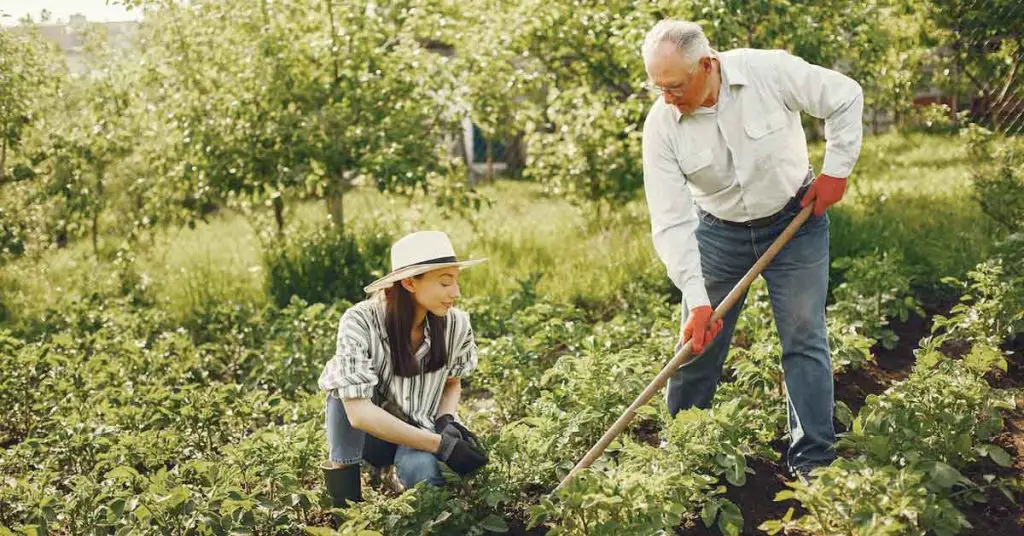
Homesteading in early summer is both rewarding and demanding. As the temperatures rise and gardens reach full production, homesteaders face challenges such as increased pest activity, plant diseases, heat stress, and unpredictable storms. Successfully navigating these hurdles requires proactive strategies to ensure that crops, livestock, and homestead infrastructure remain resilient and productive.
This section covers organic pest control, disease prevention, and strategies to manage extreme summer weather, helping homesteaders maintain stability and productivity throughout the season.
Managing Pests and Diseases
Pests and plant diseases peak in early summer, threatening crops and livestock. Without proper management, these issues can reduce yields, weaken plants, and create long-term problems for homesteaders.
Organic Pest Control Methods
Using natural pest management techniques helps protect crops without relying on synthetic chemicals.
Companion Planting for Pest Prevention
- Marigolds – Repel nematodes and aphids in vegetable gardens.
- Basil – Deters mosquitoes and enhances tomato growth.
- Nasturtiums – Act as a trap crop for aphids and squash bugs.
DIY Organic Pest Sprays
- Neem Oil Spray – Works against aphids, mites, and whiteflies.
- Garlic & Chili Pepper Spray – Naturally repels caterpillars and beetles.
- Diatomaceous Earth (DE) – A non-toxic solution for soft-bodied pests like slugs and flea beetles.
Encouraging Beneficial Insects
- Ladybugs – Control aphid populations.
- Lacewings – Eat mites, thrips, and whiteflies.
- Praying Mantises – Target grasshoppers, crickets, and caterpillars.
Physical Pest Control Techniques
- Hand-picking large pests like hornworms and Japanese beetles.
- Floating row covers to protect seedlings from flea beetles.
- Crop rotation to prevent pest populations from becoming established.
Tip: Mulching around plants helps deter pests, retain moisture, and regulate soil temperature.
Disease-Resistant Crop Varieties
Selecting disease-resistant plant varieties is an effective long-term strategy to reduce crop losses.
Tomato Varieties Resistant to Blight & Wilt:
- Celebrity (Resists Fusarium Wilt and Verticillium Wilt)
- Juliet (Resists Late Blight)
Cucumber Varieties Resistant to Powdery Mildew:
- Marketmore 76
- Diva Hybrid
Squash Varieties Resistant to Vine Borers:
- Waltham Butternut
- Tromboncino
Tip: Avoid overhead watering in the evening to reduce fungal diseases like powdery mildew and blight.
Coping with Weather Extremes
Extreme weather in early summer can range from prolonged heat waves to sudden storms, both of which threaten homestead infrastructure, crops, and animals.
Heat Mitigation Strategies
Protecting Livestock from Heat Stress
- Provide plenty of shade and well-ventilated shelters.
- Use automatic waterers to keep animals hydrated at all times.
- Adjust feeding schedules to early morning and late evening to avoid heat stress.
Watering Techniques to Prevent Heat Damage in Crops
- Drip irrigation delivers water directly to plant roots, reducing evaporation.
- Deep mulching (2-4 inches) helps retain soil moisture and regulate soil temperature.
- Use shade cloth over delicate crops like lettuce and spinach to prevent bolting.
Cooling Strategies for Off-Grid Homesteads
- Plant trees strategically around homes and livestock shelters for natural cooling.
- Use solar-powered fans in barns and coops to increase airflow.
- Construct earth berms or underground cellars for natural temperature regulation.
Tip: Install reflective roofing materials on barns and animal shelters to reduce heat absorption.
Storm Preparedness for Homesteaders
Sudden summer storms, high winds, and even tornadoes can cause significant damage to homesteads. Proper storm-proofing measures can reduce risks and prevent costly losses.
Protecting Structures from High Winds
- Anchor greenhouses and hoop houses with strong stakes and sandbags.
- Reinforce barns, chicken coops, and animal shelters with wind-resistant materials.
- Trim large tree branches near buildings to prevent damage during storms.
Securing Livestock Before a Storm
- Move animals to sturdy, enclosed shelters ahead of high winds.
- Provide extra bedding for insulation if cool temperatures follow a storm.
- Store emergency feed and water in case of supply disruptions.
Preventing Crop Loss from Heavy Rain
- Create raised garden beds to improve drainage in flood-prone areas.
- Install swales and berms to redirect excess water away from crops.
- Plant deep-rooted cover crops like clover to stabilize soil and prevent erosion.
Tip: Keep an emergency homestead checklist with flashlights, backup generators, extra fuel, and first-aid supplies in case of power outages.
Building a Resilient Early Summer Homestead
Homesteading in early summer comes with its fair share of challenges, but with the right pest control strategies, heat mitigation techniques, and storm preparedness measures, homesteaders can ensure a productive, resilient, and sustainable homestead.
Off-Grid and Sustainable Practices for Summer Homesteading
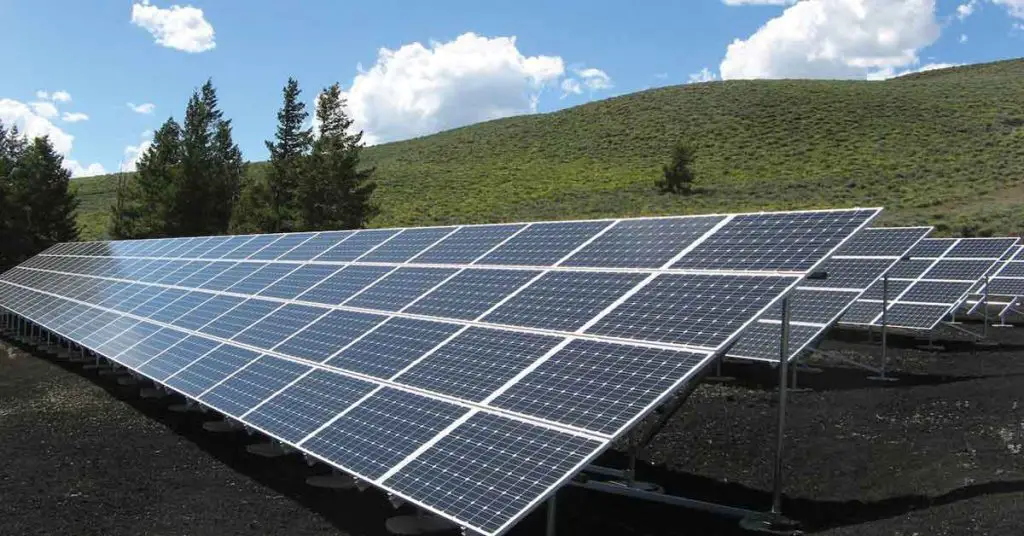
Homesteading in early summer presents a unique opportunity to integrate off-grid and sustainable living practices that reduce reliance on municipal utilities while maximizing efficiency and self-sufficiency. The longer daylight hours and warm temperatures provide ideal conditions for solar power generation, water conservation, and passive cooling strategies.
This section explores off-grid energy solutions, waste management techniques, and practical ways to keep your homestead cool and efficient during the summer months.
Reducing Reliance on Municipal Utilities
For many homesteaders, going off-grid means reducing dependency on traditional energy, water, and waste systems. By implementing renewable energy and sustainable waste management practices, homesteaders can become more self-reliant and environmentally responsible.
Solar Energy Options for Summer Homesteads
Summer provides longer daylight hours, making it the best season for solar energy generation. Solar panels can be used to power irrigation systems, well pumps, fans, refrigeration, and household appliances.
Types of Solar Energy Systems for Homesteaders
- Grid-Tied Solar Systems – Lower electricity bills while still having access to grid power.
- Off-Grid Solar Systems – Independent energy generation with battery storage for night use.
- Solar Water Heating – Provides hot water for showers, dishwashing, and livestock needs without relying on propane or electricity.
Best Practices for Solar Panel Installation:
- Position panels at a south-facing angle for maximum sun exposure.
- Keep panels clean and free of debris for optimal efficiency.
- Pair solar power with deep-cycle batteries to store excess energy for nighttime use.
Tip: Use solar-powered fans and attic ventilators to reduce heat buildup in barns, coops, and homes.
DIY Composting Toilets and Waste Management
Composting toilets are an eco-friendly, water-saving solution for off-grid homesteads, reducing dependence on septic or municipal wastewater systems.
Benefits of Composting Toilets:
- Requires no plumbing or water, making them ideal for remote areas.
- Converts waste into nutrient-rich compost for non-food plants.
- Eliminates sewage odors when properly maintained.
How to Build a Simple DIY Composting Toilet:
- Use a 5-gallon bucket or install a pre-made composting system.
- Line with sawdust, peat moss, or shredded leaves to control odor.
- Regularly empty into an outdoor compost bin and allow it to decompose over time.
- Rotate compost piles and let them break down for at least a year before using in gardens (avoid using on edible crops).
Tip: Add charcoal or diatomaceous earth to the compost pile to speed up decomposition and reduce odor.
Simple Homesteading Practices for Energy Efficiency
Early summer can bring intense heat and increased energy consumption, but small efficiency upgrades can significantly reduce energy use and improve comfort.
Natural Cooling Strategies for Off-Grid Homes
Passive Cooling Methods to Keep Your Home Cool Without Electricity:
- Cross-ventilation: Open windows and doors on opposite sides of your home to create airflow.
- Thermal mass storage: Use adobe, stone, or concrete walls to absorb and release heat slowly.
- Reflective roofing materials: Light-colored metal roofs deflect heat rather than absorbing it.
Best Materials for Natural Insulation in Summer:
- Straw bales – Insulate walls while maintaining airflow.
- Clay or earthen walls – Retain cool temperatures in hot weather.
- Wool or recycled denim insulation – Keeps homes cool in summer and warm in winter.
Tip: Install thick blackout curtains or bamboo blinds to reduce indoor temperatures naturally.
Using Wind and Shade for Passive Cooling
Natural wind flow and shade management can significantly reduce cooling costs and improve the livability of an off-grid homestead in early summer.
Creating Natural Shade:
- Plant deciduous trees (oak, maple, pecan) on the south and west sides of buildings to block summer sun while allowing winter sunlight through.
- Grow climbing vines (grapes, ivy, wisteria) on trellises near homes for additional shade.
- Use shade cloth over livestock pens and gardens to reduce heat exposure.
Utilizing Wind for Passive Cooling:
- Install wind turbines in open areas to generate extra off-grid power.
- Use wind tunnels and window positioning to direct cool breezes through living spaces.
- Build windbreaks (hedges or wooden fences) to block harsh hot winds while channeling cooler air.
Tip: Place water features like ponds or fountains near homes and patios—as the water evaporates, it naturally cools the surrounding air.
Building a Resilient, Off-Grid Summer Homestead
Homesteading in early summer offers the perfect time to implement off-grid solutions, taking advantage of solar energy, natural cooling, and sustainable water management. By reducing reliance on municipal utilities, improving energy efficiency, and using natural climate control techniques, homesteaders can increase resilience while maintaining comfort and productivity.
Preparing for Mid-to-Late Summer Challenges

As homesteading in early summer transitions into the hottest months of the year, new challenges arise that require proactive planning and adaptation. Drought conditions, extreme heat, and increased water demands can strain both gardens and livestock, making efficient water use and heat management essential for a thriving homestead.
This section covers drought preparedness, livestock care, and sustainable water management strategies to help homesteaders navigate the peak of summer successfully.
Preparing for Drought and Water Shortages
As summer progresses, rainfall can become less predictable, making water conservation and drought-resistant gardening techniques essential.
Best Crops for Dry Conditions
Drought-Tolerant Vegetables
- Okra – Thrives in hot, dry weather and continues producing with minimal water.
- Sweet Potatoes – Deep-rooted, making them resilient to drought.
- Cowpeas (Black-Eyed Peas) – Naturally adapted to hot, dry conditions.
- Zucchini & Squash – Hardy and can tolerate dry spells once established.
- Tomatoes (Cherry & Roma Varieties) – More drought-resistant than larger tomatoes.
Drought-Tolerant Grains & Forage Crops
- Sorghum – Requires less water than corn and can be used for grain or livestock forage.
- Millet – Heat-resistant and a great alternative to water-heavy grains.
- Alfalfa – Deep roots allow it to thrive with less frequent watering.
Perennials That Survive Drought
- Asparagus – Once established, needs minimal irrigation.
- Herbs (Rosemary, Thyme, Oregano) – Thrive in hot, dry climates.
- Berry Bushes (Blackberries, Elderberries) – Can survive periods of drought once roots are deep.
Tip: Plant deep-rooted crops and use mulch to reduce soil moisture loss and insulate roots from extreme heat.
Efficient Watering Schedules and Soil Conservation
When water becomes scarce, efficient watering and soil management techniques make a significant difference in crop survival.
Best Watering Practices for Hot, Dry Weather
- Water early in the morning or late in the evening to reduce evaporation.
- Use drip irrigation or soaker hoses to deliver water directly to the roots.
- Group plants by water needs to improve efficiency and reduce waste.
Soil Conservation Strategies for Drought Preparedness
- Apply Thick Mulch (2-4 inches) – Retains moisture and prevents weeds.
- Use Cover Crops (Clover, Rye, Buckwheat) – Helps protect soil from erosion.
- Deep Watering – Encourage roots to grow deeper into the soil for better drought resistance.
Tip: Create swales or berms around plants to capture and direct rainwater where it’s needed most.
Managing Livestock in Extreme Heat
As temperatures soar in mid-to-late summer, livestock face increased risks of heat stress, dehydration, and reduced productivity. Proper feeding adjustments and cooling techniques can help maintain animal health and well-being.
Summer Feeding Adjustments for Livestock Health
Increase Water-Rich Feeds
- Provide fresh pasture and forage crops like clover and alfalfa to help hydrate animals naturally.
- Offer chopped fruits and vegetables (watermelon, cucumbers) to add moisture to their diet.
Modify Feeding Schedules
- Feed livestock early in the morning or late in the evening to avoid the hottest part of the day.
- Reduce high-energy grains, which increase internal heat production.
Optimize Mineral & Electrolyte Intake
- Add electrolytes to water to replace minerals lost through sweat.
- Ensure animals have access to loose mineral supplements to support hydration and overall health.
Tip: Consider offering frozen treats (ice blocks with fruit or herbs) to cool livestock down naturally.
Preventing Heatstroke in Animals
Recognizing and preventing heat stress is crucial for maintaining healthy and productive livestock in extreme summer heat.
Signs of Heat Stress in Livestock:
- Heavy panting or excessive drooling
- Lethargy and reduced movement
- Loss of appetite and lower milk production
- Unsteady walking or collapse
Cooling Strategies for Livestock:
- Provide ample shade – Use trees, shade cloth, or portable shelters to protect animals from direct sun.
- Improve ventilation – Install solar-powered fans in barns and coops.
- Keep water cool and fresh – Use shaded water stations and automatic refilling systems.
Livestock-Specific Cooling Tips:
- Chickens – Place frozen water bottles in coops and add cooling dust baths.
- Cows & Goats – Spray cool misting water on their legs and underbellies.
- Pigs – Provide mud wallows to regulate body temperature.
Tip: Rotate grazing areas near shaded spots or water sources to reduce stress during extreme heat.
Thriving Through the Late Summer Heat
Homesteading in early summer prepares you for the intense heat and dry conditions of mid-to-late summer. By choosing drought-tolerant crops, improving watering efficiency, and ensuring proper livestock care, homesteaders can maintain productivity while protecting their animals and gardens.
Recap: Homesteading in Early Summer
Homesteading in early summer is a season of growth, productivity, and preparation. The longer days, abundant harvests, and warm weather provide great opportunities for gardening, livestock care, and food preservation—but they also bring challenges like heat stress, drought, and pest infestations. By implementing sustainable practices and proactive planning, homesteaders can ensure their land, animals, and food supply remain resilient and thriving through the hotter months ahead.
Key Takeaways for a Successful Early Summer Homestead
Choosing the Right Crops and Livestock for Summer Conditions
- Plant heat-tolerant crops like okra, sweet potatoes, and drought-resistant beans.
- Select livestock breeds that handle heat well, such as Leghorn chickens, Nubian goats, and Kiko goats.
Managing Water Efficiently and Preparing for Seasonal Challenges
- Use rainwater harvesting and drip irrigation to conserve water during dry spells.
- Implement shade, ventilation, and hydration strategies to prevent heat stress in livestock.
- Prepare for mid-to-late summer storms and extreme heat events by securing infrastructure and stocking essential supplies.
Preserving Food and Maximizing Harvest Productivity
- Use canning, drying, and fermenting techniques to extend the shelf life of summer produce.
- Store root vegetables and grains in root cellars or low-energy storage solutions.
- Rotate crops, add mulch, and practice no-till gardening to maintain soil health for continued productivity.
By focusing on resilient farming techniques, efficient resource management, and proper food storage, homesteaders can ensure a productive summer and prepare for the months ahead.
Join the Conversation: Share Your Early Summer Homesteading Tips!
Every homestead is unique, and learning from one another is key to continuous growth and success. Have you found a favorite drought-resistant crop? A go-to method for keeping livestock cool? A food preservation hack that saves time and money?
We’d love to hear from you! Share your experiences, challenges, and best practices in the comments below.
- What’s the biggest challenge you face in early summer homesteading?
- Do you have favorite crops, livestock breeds, or sustainable techniques that work well in hot weather?
- Are there any homesteading resources, books, or tools that you recommend to fellow homesteaders?
Let’s build a stronger, more resilient homesteading community together!
Disclaimer: The information provided in this article is for general informational purposes only and is not intended to be a substitute for professional advice. The author of this article does not claim to be an expert in homesteading and the information provided should not be relied upon to make decisions about your own homesteading journey. Please do your own research and consult with a qualified professional before making any decisions about your homestead.
Share via:
Shaun Alexander is the main writer and editor for HomesteadingSimple.com. With a strong passion for homesteading and sustainability, Shaun has dedicated his life to learning and sharing information about a simple, fulfilling existence tied to the land. His expertise ranges from gardening and livestock management to off-grid living and DIY projects, reflecting the diverse skills necessary for a successful homesteading lifestyle. Shaun’s goal is to inspire and educate others about the possibilities of homesteading, whether in rural, suburban, or urban settings, and to provide practical advice and tips for both beginners and seasoned homesteaders. He believes in a future where more people return to their roots, embracing a life of self-sufficiency and harmony with nature.


